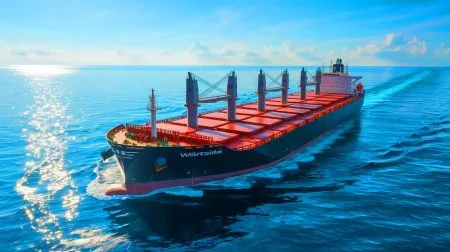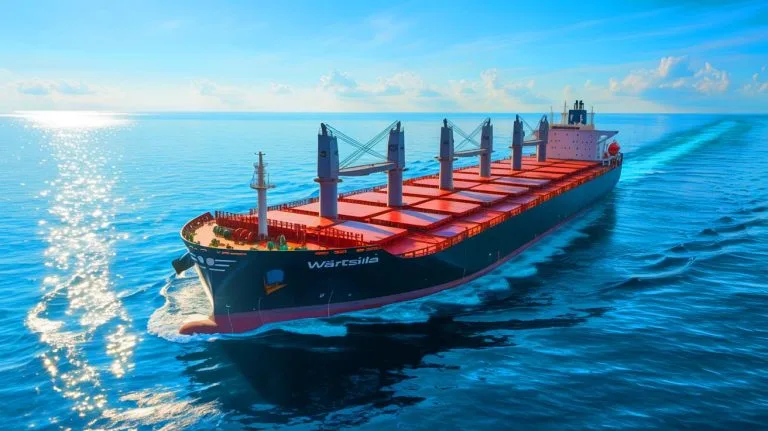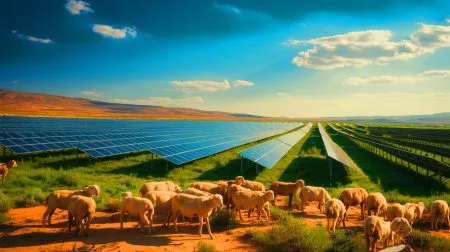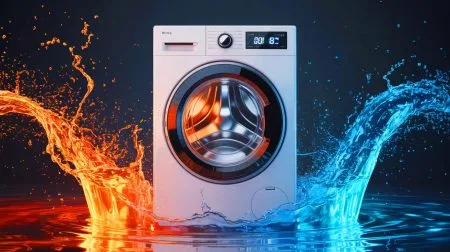| IN A NUTSHELL |
|
In an era where environmental sustainability is a pressing global concern, the heavy marine sector stands as one of the most challenging industries to decarbonize. Finnish company Wärtsilä, known for its powerful engines, is taking significant steps to address this issue. With a strategic focus on decarbonization, Wärtsilä aims to revolutionize the marine industry by 2050. CEO Håkan Agnevall is at the forefront of this ambitious endeavor, highlighting a multifaceted approach that includes the adoption of new fuels, digital optimization, and innovative technologies. As Wärtsilä navigates this complex journey, the future of sustainable marine transportation hangs in the balance.
The Challenge of Heavy Marine Emissions
The heavy marine sector is notorious for its substantial carbon emissions. Massive cargo and passenger ships rely heavily on bunker fuel, a low-grade, high-sulfur oil, to power their engines. This fuel is not only inexpensive but also one of the dirtiest available, contributing significantly to global greenhouse gas emissions. For instance, a large cargo ship like the Emma Maersk can burn through 84,200 gallons of bunker fuel in a single day, resulting in over 1,000 tonnes of emissions. Despite being an efficient mode of transportation, the scale of emissions from shipping is staggering.
Addressing this challenge requires innovative solutions, and Wärtsilä is leading the charge. The company’s strategy is based on the premise that there is no single solution to decarbonizing the marine industry. Instead, a combination of new fuels, emission reduction technologies, and operational optimizations are needed. This comprehensive approach aims to transform the marine sector into a more sustainable industry by mid-century.
Global Carbon Tax: A Bold Step Forward
One of the key initiatives in the marine industry’s decarbonization strategy is the introduction of a global carbon tax. The International Maritime Organization (IMO) has approved a plan to implement a “well-to-wake” carbon and emissions tax, which could be ratified as early as October. This tax is designed to incentivize the reduction of emissions across the shipping industry by imposing penalties on ships that exceed set emission limits. The tax aims to encourage investment in research and development for cleaner technologies.
The initiative will place “remedial unit” penalties of $100 to $380 per tonne of CO2 emissions over allowed limits, starting in 2028.
This ambitious plan has the potential to make the marine industry one of the first to introduce a global carbon fee. If successful, the initiative could serve as a model for other industries seeking to reduce their carbon footprint. The decision, however, hinges on the cooperation of international players, as the sector awaits a final decision on the proposal.
Optimizing Schedules for Efficiency
Another promising avenue for reducing emissions is digital schedule optimization. By synchronizing schedules between ships and ports, the marine industry could achieve fuel savings and emission reductions of up to 30%. Currently, ships often arrive at ports only to wait for days due to scheduling inefficiencies. This results in unnecessary fuel consumption as ships maintain power while idling.
Floating Wind Turbines Now Generate Power in Deep Waters as France Completes World’s First Project
Efforts are underway to address this inefficiency through the Blue Visby Consortium’s scheduling system. This system aims to optimize global shipping schedules, allowing ships to reduce speed while maintaining timely deliveries. The approach not only cuts emissions but also shares the financial benefits among stakeholders, promoting a collaborative effort to enhance efficiency.
Onboard Carbon Capture and Multi-Fuel Engines
Wärtsilä is also pioneering onboard carbon capture systems as a means to retrofit existing ships. These systems can capture up to 70% of carbon emissions from ship exhausts, providing a viable short-term solution for emission reduction. Although the technology is effective, it requires the development of infrastructure for offloading and utilizing captured carbon.
In tandem with carbon capture, Wärtsilä is investing in multi-fuel engines. These engines are designed to run on both current fossil fuels and future low-carbon alternatives. The flexibility of multi-fuel engines ensures that new ships built today can transition to cleaner fuels as they become available. This adaptability is crucial for meeting long-term emission reduction targets while accommodating the gradual rollout of new fuel technologies.
Methanol and Ammonia: The Future of Marine Fuels
Looking ahead, methanol and ammonia are emerging as potential zero-carbon marine fuels. Methanol, already used in various applications, offers a cleaner alternative with the potential to reduce CO2 emissions by up to 95% when produced renewably. Meanwhile, ammonia presents a promising long-term solution due to its high energy density and absence of carbon emissions.
Wärtsilä is actively developing engines capable of running on these fuels, recognizing their potential to revolutionize the industry. However, challenges remain in terms of production scale and infrastructure development. As the marine sector transitions towards these fuels, collaboration across the industry will be essential to overcome these hurdles and ensure a sustainable future for shipping.
The journey towards a zero-carbon marine industry is fraught with challenges but also ripe with opportunities. Wärtsilä’s comprehensive strategy and commitment to innovation underscore the potential for meaningful change. As the industry moves towards a greener future, one pressing question remains: how can stakeholders effectively collaborate to accelerate the transition and achieve global carbon reduction goals by 2050?
Did you like it? 4.4/5 (29)







Will these penalties really make a difference, or will companies just pass the costs onto consumers?
This is a bold move, but will it be enough to push the entire industry towards zero emissions? 🤔